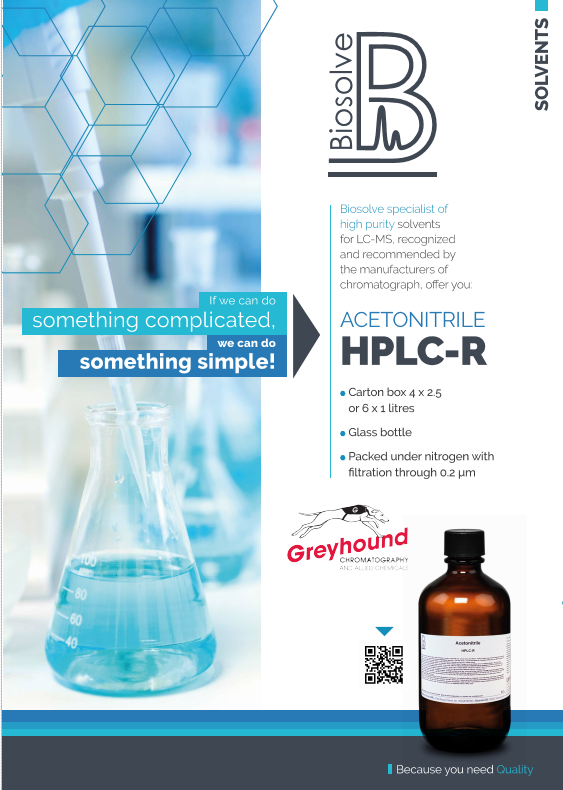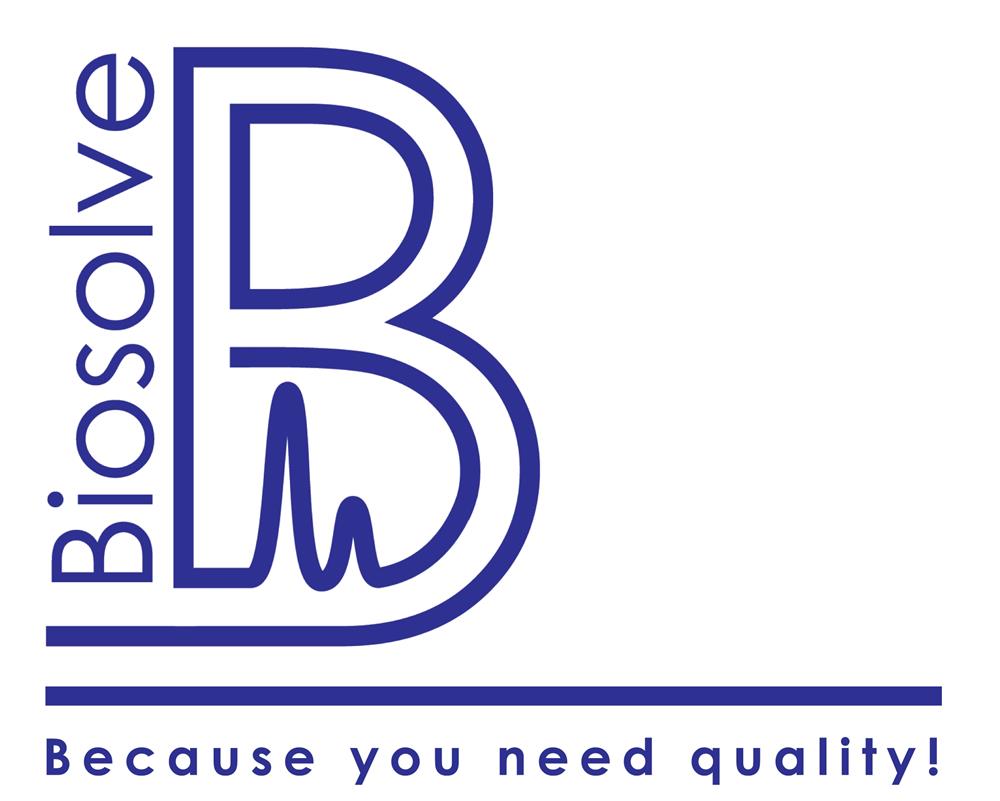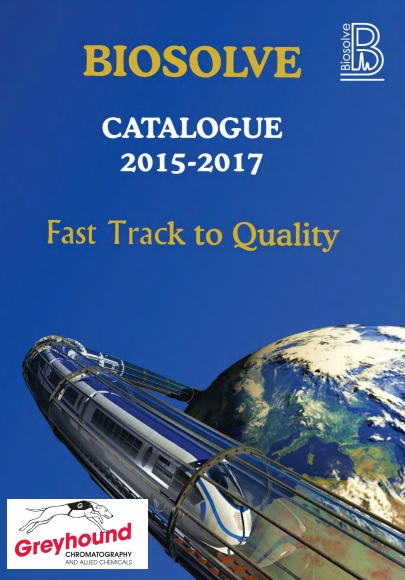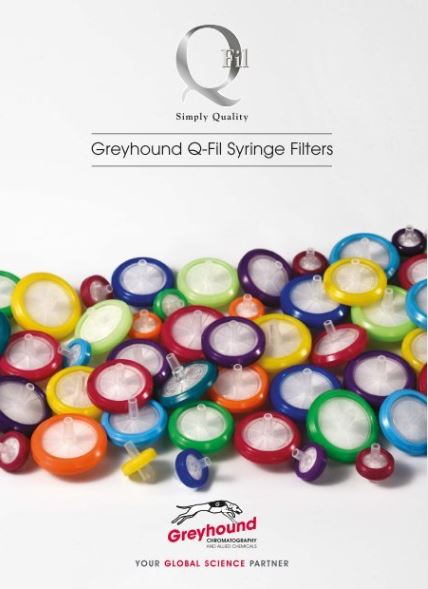Acetonitrile Prices Increased During The Pandemic
During the Coronavirus Pandemic there is a worldwide shortage of Acetonitrile as manufucturing slows down all across the globe. China and the USA have greatly reduced their manufacturing across all industries as the world tries to combat the Covid-19 virus. Anything that affects manufucatruring and mass production subsequently affects the production of Aceonitrile.
While we are experiencing daily increases in the price of solvents it is important that laboratories, both in Research Labs and manufacturing plants monitor their solvent usage and try as best they can to anticipate their solvent usage. Greyhound Chromatography is using their UK warehouse to stock solvents at today's prices and is organising call off orders with its stakeholders.
If you have a need for solvents, whether you are a new customer or existing customer with an established call off arrangement now is the time to discuss with Greyhound's Sales Team how your supply chain can be protected.
Why is Acetonitrile Used in HPLC?
Acetonitrile together with Methanol are the most commonly used solvents for HPLC and UHPLC Chromatography processes because most substances are easily soluble in both solvents, but not saturated hydrocarbons. Acetonitrile has a low wavelength which means that the solvent will elute first from the column, therefore pressure is reduced on the column. Lower pressure in the column will have the long term effect of prolonging the life of the column, pressure within the column varies depending on the solvent used and the mixture ratio between the solvent and the sample. An Acetonitrile based solution generally has a higher elution strength against the same strength solution using Methanol. Some scientists report that the same retention times can be achieved using acetonitrile with less than half the ratio of methanol. Operator errors can have a significant impact of reproduceable results.
Acetonitrile produces less pressure than Methanol, however the choice between using Acetonitrile against Methanol should not be made on price, (Acetonitrile is generally more expensive than Methanol), choice should be made on performance for your particular instrument and the effect of the chromatography process on the durability of the column. High grade Acetonitrile has a lower absorbance in routine HPLC and UHPLC procedures and causes less interference than other solvents that can be used.

Biosolve solvents, including Acetonitrile, supplied by Greyhound Chromatography, are filtered at 0.1µm and are packed under inert nitrogen gas for longer shelf life, with very low amounts of inorganic metallic contaminants. Acetonitrile is bottled in pure glass containers to minimise leaching and degradation of the solvent. Acetonitrile is a clear colourless liquid with an acidity as low as 0-0.001% depending on the grade. The presence of acid in the solvent improves the chromatographic peak shape. Full certificates of analysis are available to view before selecting the right grade of solvent for your application. Acetonitrile Surpa-gradient grade, available from Biosolve, is the highest-grade Acetonitrile solvent available for HPLC and UHPLC in today's worldwide market.
Acetonitrile is shipped under Dangerous Goods regulations as it is a highly flammable liquid and vapour. Safety procedures should be closely followed for the safe handling of Acetonitrile, including keeping away from sparks and open flames, hot surfaces and heated storage rooms. When handling take reasonable precautions to ensure that it does not go on skin or near eyes. If Acetonitrile does come into contact with clothes, remove the clothing and rinse thoroughly in water. If it comes into contact with the skin, wash cautiously with water. If acetonitrile comes into contact with the eyes, remove contact lenses if they are present, rinse with water for several minutes and seek medical advice.
Is there a need to wash columns frequently during HPLC
It is important to look after your columns to prolong their life and also their integrity. Washing a column is an important process that should be done regularly. Depending on how many samples you are processing and how often you are using them will determine how many times you wash the column. Storage of the cleaned columns should also be considered. It is important to establish a wash cycle in the laboratory, if you do not you will notice a gradual pressure build up and you may experience ghost peaks after the first injection. Ghost peaks are caused by compounds eluting off the column in later runs despite being injected in a previous analysis.
This is the recommendation for a column that is to be stored over a long period. Replace buffers and modifiers at the end of the day, it is recommended that you wash the column with 70% water, 15% methanol and 15% acetonitrile. divert the eluent from the column to waste so as not to contaminate the detectors. Wash the column in 100% methanol and 100% acetonitrile, both for at least 15 minutes. Store the column subject to the manufacturers recommendations, this will preserve the column, which may last for years depending on the number of samples processed and the care you give to your column. For daily use, wash the column in 70% water, without using an acid or modifier, and store overnight subject to manufacturer's instructions.
About Solvents
Solvents are liquids which dissolve other substances with water a common example. The selection of a solvent will depend on whether or not something dissolves in it (solvency), its evaporation rate, boiling point, viscosity, surface tension and many other factors.
Acetonitrile together with Methanol are the most commonly used solvents for HPLC and UHPLC Chromatography processes because most substances are easily soluble in both solvents, but not saturated hydrocarbons. Acetonitrile has a low wavelength which means that the solvent will elute first from the column, therefore pressure is reduced on the column. Lower pressure in the column will have the long term effect of prolonging the life of the column, pressure within the column varies depending on the solvent used and the mixture ratio between the solvent and the sample.
Isopropanol (IPA) is used as a solvent in cosmetics and personal care products, de-icers, paints and resins, pharmaceuticals, food, inks and adhesives. A pharmaceutical grade of IPA is used in products such as medicinal tablets as well as disinfectants, sterilisers and skin creams. IPA is used in de-icers and cleaning products because it stays in liquid form well below the freezing point of water.
Acetone is a widely used solvent. Pharmaceuticals is the largest consumer of acetone solvent with significant quantities also being used in glass reinforced plastics, cigarette tow, rubber chemicals and household, cosmetic and personal care products.
Ethyl acetate has applications as a solvent in inks for flexographic and rotogravure printing. It is used as an extraction solvent in the production of pharmaceuticals and food, and as a carrier solvent for herbicides.
All of the above solvents are seeing dramatic price increases in 2020 as demand grows worldwide for products that are used to combat the effects of Covid-19. Many manufacturers are switching production from their regular products to producing hand and surface sanitizers that are in high demand worldwide. The price of these products has more than trebled since the start of 2020. Many alcohol manufacturers have ceased production of commercial alcohol products because of the closure of bars and restaurants and are now producing sanitizers either comercially or as a product they can donate to the health service to assist the fight against Covid-19.
Historic World Shortage of Acetonitrile
In 2008 there was a world shortage of Acetonitrile, (a by-product from the manufacture of acrylonitrile) because of several factors, including, Chinese manufacture being shut down because China was hosting the Olympics and all industry within China was either closed down or drastically reduced in an attempt to improve the standard of air during the Olympics. Also, during Hurricane Ike in the USA an Acetonitrile factory was damaged in Texas causing further shortages. As Methanol is an acceptable substitute in most HPLC methods the shortage can be overcome. Acetonitrile is seen as a valuable commodity due to the volume used worldwide for a variety of purposes other than Laboratory analysis. The 2020 Coronavirus Pandemic is again causing shortages worldwide.
Author:
Susan Massie, Sales & Marketing Director
Greyhound Chromatography and Allied Chemicals
Scan for Biosolve Products.
New Q-Fil Syringe Filters Catalogue
CONTACT US
Tel: +44 (0) 151 649 4000
Email: marketing@greyhoundchrom.com
FOLLOW US
YOU MAY ALSO BE INTERESTED IN OUR NEWSLETTER






















